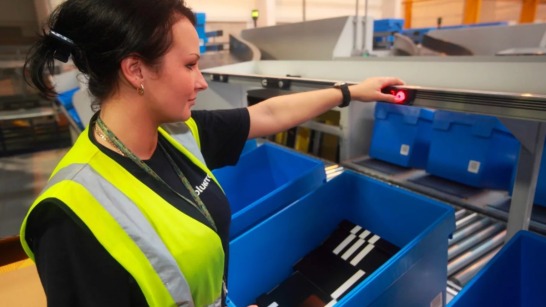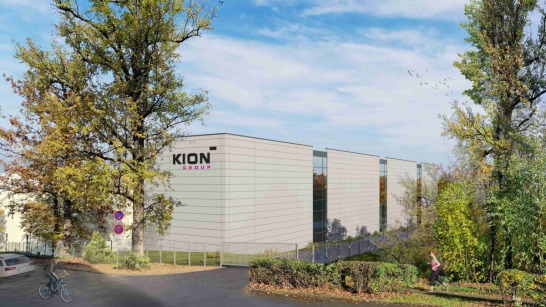Enlightened by the exciting insights from Jennifer Tabbert and Max Thinius, it’s back to home sweet home, where I find my son relaxing on the couch. But there’s no rest for me: “Haven’t you forgotten something?” asks my husband Thomas – and he’s right: there’s something still missing from my cozy scene. Christmas is just around the corner, and as the saying goes: the early bird catches the worm. So it’s already time for us to think about buying our Christmas tree. The three of us set off, and with the festive firs still barely visible in the distance, my KION instinct kicks in once again. We like to buy our Christmas tree from our local tree retailer, who purchases them from GROEN Direkt. Within the space of a few weeks, this wholesaler from South Holland produces hundreds of thousands of Christmas trees—and is particularly reliant on counterbalanced trucks from KION subsidiary STILL in order to achieve this mammoth feat. I leave my son in charge of finding the perfect tree while I phone Mitchell Hoegee, Account Manager at STILL to ask him why STILL forklift trucks are the key to tackling the Christmas tree business.
Hi there, Mr. Hoegee – are things busy for you right now?
Oh yes. During autumn and the Christmas period, we don’t get a moment to catch our breath. Throughout the year, the site here in Hazerswoude-Dorp is essentially a huge garden center. But from November 1 through to the end of December, we mainly handle Christmas trees – using forklift trucks from STILL. Everything has to run smoothly on our side. This includes the Christmas cash & carry service, which is aimed at private households, or the delivery of extra-large Christmas trees for markets.
Got it – which trucks does GROEK Direkt use?
GROEN uses the following forklift trucks during this seasonal period: the RX60-35 and the RX60-50, so a 3.5 metric ton truck and a 5 metric ton truck, both all-electric with a lead-acid battery drive. There’s also one STILL LPG in use too. Starting in November, GROEN takes delivery of huge quantities of Christmas trees, sorting them by size and type in the warehouse so that it can present them to customers. That alone is a highly laborious task. The storage area for this is quite large and extends over the entire site. The RX60-50 is used to handle the particularly large Christmas trees that are aimed at the B2B sector, while the RX60-35 is mainly responsible for the smaller trees. The trucks have to be highly flexible and durable – sometimes at low temperatures too.
How long is the working day for the STILL forklift trucks? And how many trees are handled during this period?
Generally the trucks are in operation from early morning until it gets dark – from 7 a.m. to 5 p.m., sometimes earlier, sometimes later. To some degree, that’s where the challenge lies: the trucks have to be ready at all times and perform well from one moment to the next. Over the festive period, the total number of Christmas trees handled on site fluctuates between 130,000 and 140,000.
That’s impressive. And what happens if there’s a problem with a truck?
GROEN Direkt purchased our hire package including the repair service. This means, for example, that we replace batteries that are damaged or are more than five or six years old. Our service technicians can be on site quickly and always do great work. In any case, GROEK Direkt has been making use of our trucks and our service offerings for many years – and not without reason.
Great, thanks for talking to me, Mr. Hoegee!
Back at home, the vegetable soup is bubbling on the stove, the tree is up, and a fire is crackling away in the fireplace. But it’ll be a few more weeks until I hand Thomas his sweater under the Christmas tree. Right now, an eventful but tiring day is coming to an end for me. I’m looking forward to curling up with a book. And while I cozy up on the couch, I think about how intralogistics and the KION brands keep working hard to bring me – and many others – this coziness.



.jpg)

